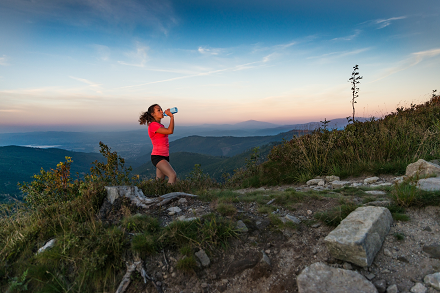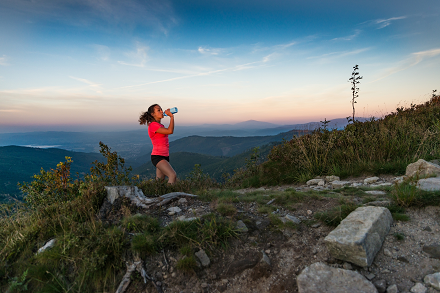

The International Olympic Committee is aiming for carbon neutrality at the 2020 Summer Games in Tokyo. That includes a hydrogen-powered Olympic torch and cauldron. Additionally, Olympic Partner Toyota will provide zero-emission vehicles — including hydrogen cars — for the Tokyo 2020 Olympic fleet.
Meanwhile, expectations are that all venues for the 2022 Winter Olympics in Beijing will be powered by renewable energy.
Most tellingly, perhaps, were the sustainability steps the IOC took for the recently completed 2020 Winter Youth Olympics in Lausanne, Switzerland. Held in January, the event featured no new sports venues built specifically for the Games. Sports took place on natural ice for the first time in Youth Olympic Games history; athletes, coaches, staff and media used public transportation to get to and from events; the Olympic flame cauldron was powered by eco-friendly Swiss wood pellets; and 100 percent of the tableware used by participants was sustainable.
Addressing climate change also is a priority, as the IOC (itself now a carbon-neutral organization) partnered with the United Nations in 2018 to launch the Sports for Climate Action Framework. The goal is to create an agenda for sport to address climate change, and almost 100 sports organizations joined the framework within a year of its launch, according to the IOC. The organization also supports Rio 2016 sailing gold medalist Hannah Mills’ “Big Plastic Pledge”— a global campaign to unite athletes and fans in fighting against plastic pollution.
It would be cynical to think that some of these developments are connected to television ratings for the 2016 Summer Olympics. But consider this: Business Insider noted that during the Rio Games, The Wall Street Journal reported that the Olympics experienced a 30 percent drop in viewership among people ages 18-34.
Pundits say the IOC needs to understand that the current Millennial and Gen Z groups are a bit affronted by the fact that the Olympics are traditionally unsustainable — erecting buildings (such as those for athlete housing) that often are unable to be repurposed and creating unacceptable levels of increased traffic and energy usage.
In an article about a recent report by Gallup, How Millennials Want to Work and Live, Millennials are seen as an exceptionally purpose-driven generation. “That’s the way we’ve always done it,” doesn’t cut it with millennials, and they expect leaders and managers to adapt to their standards in the workplace and in society.
So what have we seen in sports so far? In addition to the sustainability efforts noted above, the 2020 Tokyo Games will feature medals made from recycled electrical equipment donated by Japanese households, according to Andreas Moll, merchandising director of footwear for Olympic sponsor Asics. Additionally, all volunteers will be outfitted in recycled clothing, and podiums for medal winners will be made from PET (polyethylene terephthalate) bottles.
Additionally, athlete housing at the Games will include beds with frames built from recycled cardboard. (The Athletes’ Village consists of residential buildings, which will have 18,000 beds during the Olympic Games, reduced to 8,000 beds during the Paralympic Games.)
Efforts haven’t stopped at Tokyo. A recent announcement about the Los Angeles Games in 2028 said the city wants 80 percent of all new vehicles sold by 2028 to be electric. (The city was previously aiming for a goal of having 30 percent of all vehicles be electric by 2028.)
“We can’t turn the tide on the climate crisis until we work across sectors and city limits to put the brakes on dangerous pollution and kick our zero-emissions transportation future into high gear,” said L.A. Mayor Eric Garcetti.
We’re seeing changes in specific sports, too — including badminton and running worlds.
The Badminton World Federation (BWF) has approved the use of synthetic feather shuttlecocks at its sanctioned international tournaments of all levels from 2021 onwards, according to Inside The Games. BWF’s secretary general, Thomas Lund, was enthusiastic about the change, which required five years of research and development on the part of badminton equipment manufacturer Yonex.
“The vision is to ensure the long-term sustainability of badminton and become less dependent of using natural feathers for shuttlecocks,” he noted. “We believe this leads to greater acceptance and widespread use of synthetic feather shuttlecocks from 2021 and beyond. Moreover, we strongly believe that this new synthetic feather shuttlecock product can provide a unique platform for the future growth of badminton, and we hope to get strong support from our players and other stakeholders within the badminton community.”
Running events (including marathons) are seeing water stops increasingly going cupless, with organizers citing the enormous paper and plastic waste that accompanies road races. Of course, encouraging runners to bring water on the course means providing refills. Oregon’s Bend Marathon, which hosts its first cupless run in April, will have more aid stations throughout the course and new jugs with “high-flow valves” that can fill up a bottle in seconds. The race also will have more volunteers at each station helping with the process, according to an article in Central Oregon Daily. (Runners are encouraged to add a hydration bladder, a waist belt with bottles or store-and-go reusable cups to their training regimen — and learn how to refill them quickly).
Another aspect of racing that is increasingly going green is a push from race organizers to encourage participants to pack their trash, such as energy bar wrappers, and not drop it on the street or trail.
More events are also ditching polybag swag containers in favor of reusable shopping bags that participants can take home with them. (Selling logo space on the bags can be an additional revenue stream.)
Events that tend to try to keep junk swag to a minimum are also finding favor with the younger crowd, as are those that print T-shirts on site, allowing participants to choose a color, style and size they like – and thereby creating something that will be worn again (rather than a generic shirt that will languish in a drawer and remain largely unworn).
With nothing but gains to make by cutting out excess consumption, it’s better for sports events to continue the trend of “less is more.” Some tips for event holders can be found here, while pointers for hosting a greener expo or trade show can be found here.

